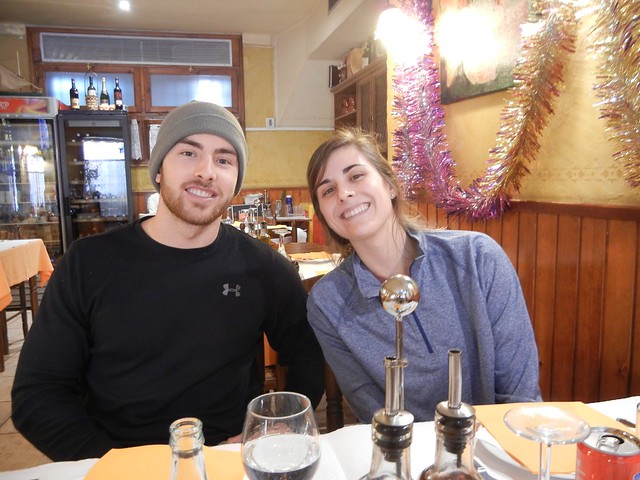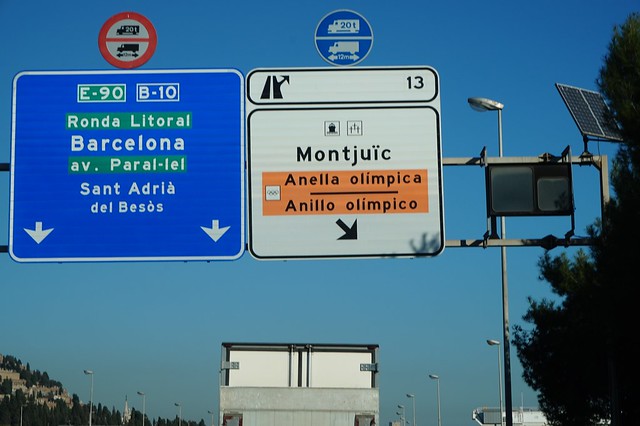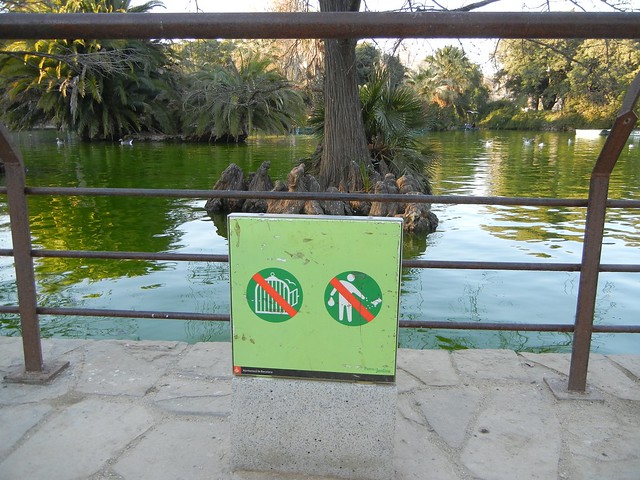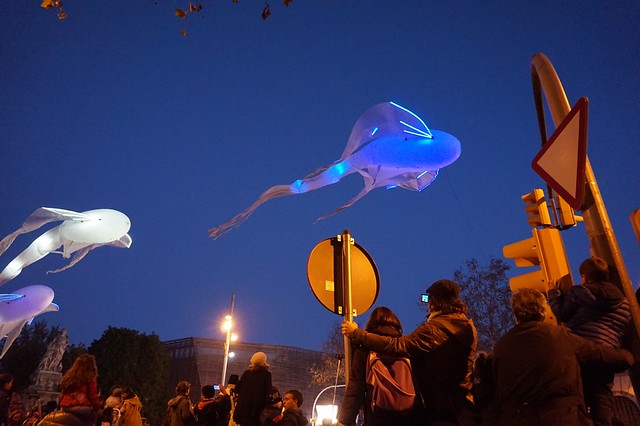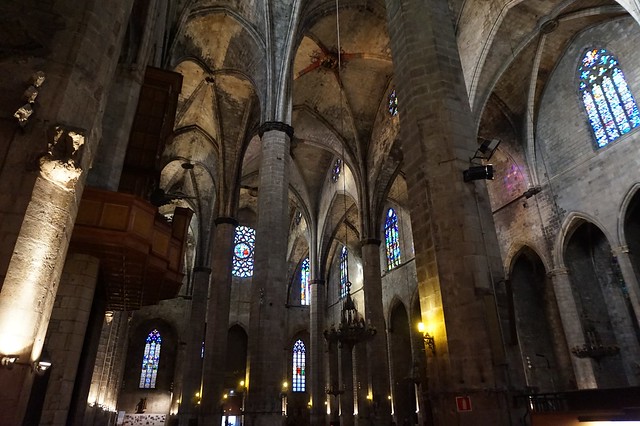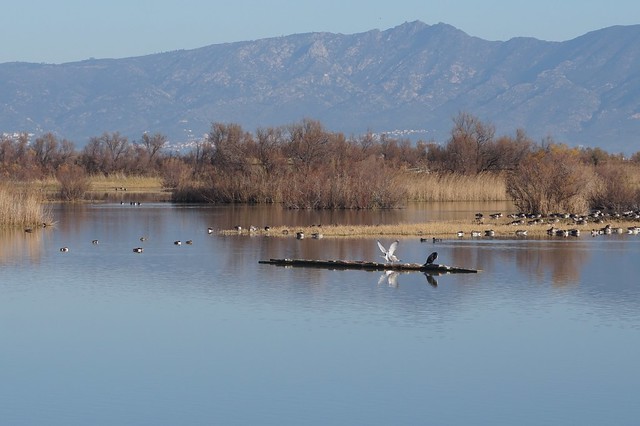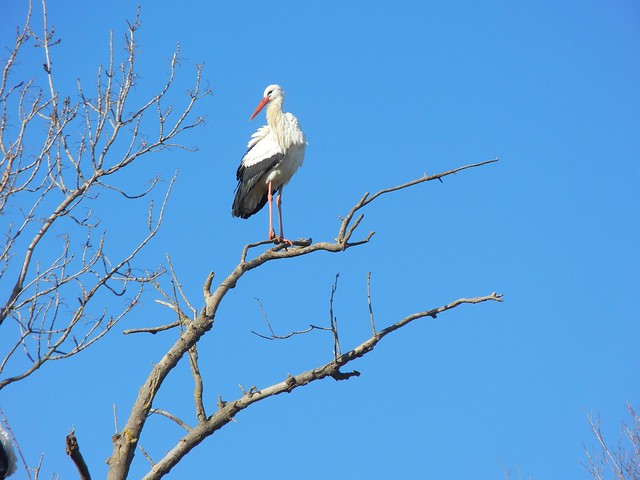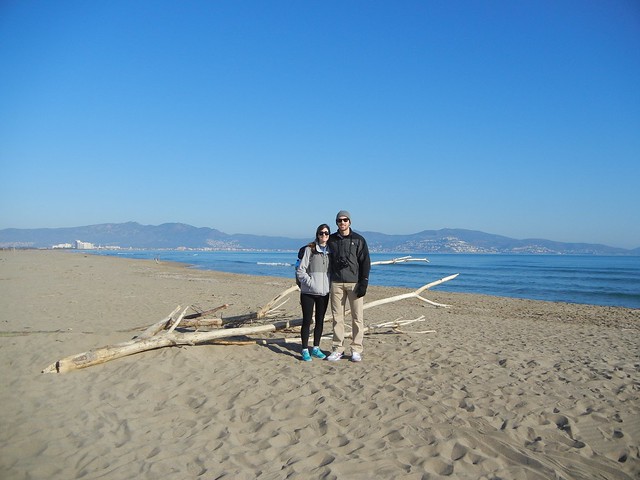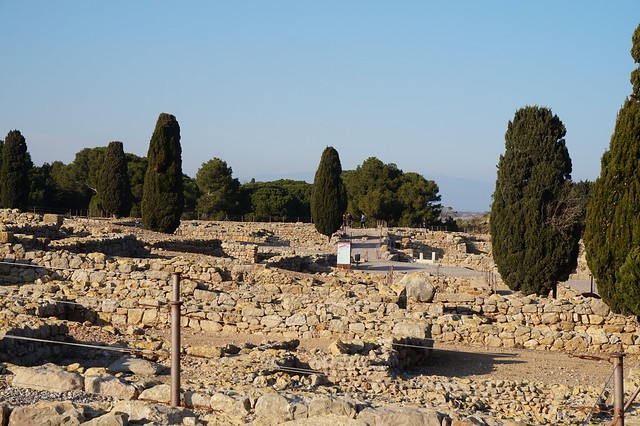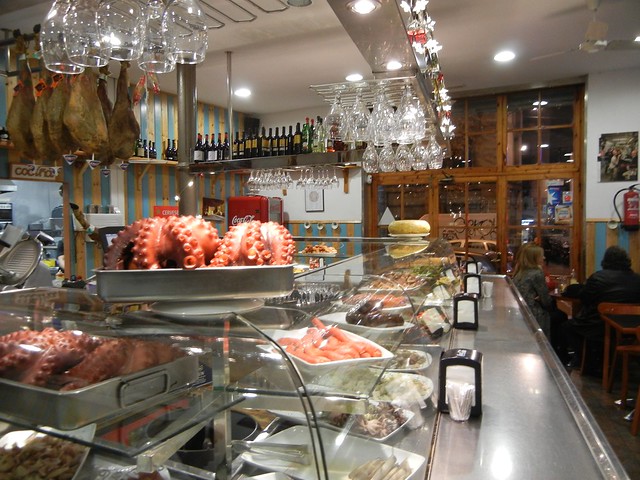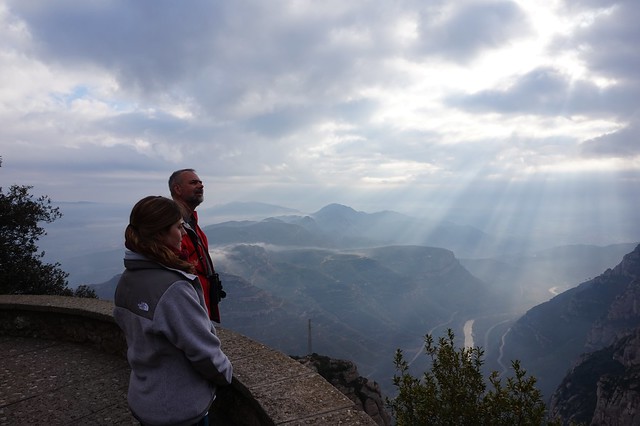I could not have been more delighted when Josh and Lizzie agreed to accompany their uncle on a winter trip to Catalonia. It was the first European visit for both of them, and a great opportunity for me to escape the cold and do a little sniffing around in preparation for April’s Birds and Art tour. I can only hope the kids had half as much fun as I did!
Our flight to Barcelona, by way of Vienna, was uneventful — the very best one can hope when flying from Newark. I picked up the rental car, unfolded the maps, and spoke sternly to the GPS, and we were off.
It was an easy drive, and Josh and Lizzie’s first introduction to a land of multi-lane traffic circles and death-defying mopedists, two phenomena we would have with us always for the next week.
It was still daylight when we checked in to our hotel (beautifully situated, tidy and clean, with a very helpful staff), so we went out into the soft, warm afternoon air for a walk through the Ciutadella Park.
After a miserably wet, cold visit to New York the day before, the sunshine and warmth were a tonic to the soul. Where everyone we’d run into in a chilly, snowy Central Park had been huddled and hurried, here we found barefoot strollers, sunbathers, people just out to soak up a little afternoon sun. Just like us.
Naturally, inevitably, we kept an eye out for wilder creatures. Black redstarts, blackcaps, house sparrows, and European robins were among the commonest birds in the bushes and trees, but they were far less conspicuous than certain pushy, noisy immigrants.
Monk parakeets and their huge stick nests were everywhere; here and elsewhere through the week, we also saw a few larger, longer-tailed birds fly over with clearer tooting calls, presumably rose-ringed parakeets. The authorities seem to be aware of the problem, if problem it be, but the well-intentioned signs posted here and there in the Ciutadella had obviously come way too late.
It got cooler as the sun set, so we slipped into the gathering stream of pedestrians flowing towards the launching point for the parade that would bring the three Wise Men to Barcelona. We smiled at all those carrying stepladders, but appreciated their wisdom by the time we reached the crowded sidewalks ourselves.
Fortunately, many of the floats and balloons were high enough that even we could see them; the only figures at street level seemed to be the helpers of the Magi, collecting the childrens’ letters in elaborate baskets.
After dinner, Josh and Lizzie retired, and I met up with Malte, whom I hadn’t seen since his visit to us in Princeton fifteen years ago (!), and he showed me around. Our first stop was a revelation, Santa Maria del Mar.
Obviously I’d seen photographs, lots of photographs, and I knew that the Catalan Gothic was of an entirely different flavor; what I didn’t expect was how moving the confrontation of massiveness and height, colored glass and somber corners would be. A remarkable, beautiful surprise.
We had tapas at Santa Caterina, then I began to wilt and headed for my pillow. But I’d managed to stay up until 11:00, which is always my rule when traveling east: if I can make it that long, jet lag simply stays away, presumably in awe of my fortitude.
And sure enough, it was easy to get up the next morning. The skies were beautiful and blue again, and warmth was obviously on its way. We decided to head north along the coast for a walk at Aiguamolls, one of Spain’s most important wetlands and a beautiful place for a stroll, birds or not.
There were birds. Northern lapwings, common snipe, and meadow pipits covered the wet fields, and we were never out of hearing of the slightly raspy courtship whistles of the teal (or common teal, or Eurasian teal, or green-winged teal, or whatever they’re called nowadays).
The ducks weren’t alone in vocalizing on a fine morning. Just about all of the resident passerines were singing on and off, including Cetti’s warblers, their explosive chants even more startling than usual for its being early January. I didn’t even try to show one to my companions: I didn’t even need to, as one fed on the ground at our feet before climbing up into the bare twigs of a tree and gleaning invisible prey from the bark, behavior that reminded me of a Bewick’s wren in a wintertime mesquite bosque.
The noise of the morning, though, was the clattering of stork bills. Malte had told me there would be a lot of white storks, but we were unprepared for the spectacle. Storks everywhere, overhead and on the meadows and perched in trees and on their bulky nests.
We were walking at a good birderly pace, something like a quarter of a mile an hour, but as mid-day approached, pushed on to the end of the path, on the beach of the Mediterranean Sea.
The water was as blue as the sky (but colder, as Lizzie discovered when a wave lapped her feet).
A great crested grebe flew by, and a few black dots resolved themselves nicely into Arctic loons, a “life bird” for me, the only one of the trip.
After lunch it was on to Empuriès, site of one of the largest and earliest Greek settlements in Iberia. The ruins are massive — but dwarfed by the remains of the Roman city just up the hill.
It looks like a perfect place come spring for blue rock thrushes and fancy wheatears, but we contented ourselves with the warm air and the view of the sea — those Ancients had a good eye for landscapes.
 A brief pause in Girona, then it was back to Barcelona for a good meal with Malte.
A brief pause in Girona, then it was back to Barcelona for a good meal with Malte.
I didn’t tell the kids what “pulperia” meant until we’d sat down.
We decided to go not quite so far afield the next day, and settled on the stunning mountain of Montserrat as our destination.
Getting there was half the fun indeed. The drive was easy and fast, and we transferred to the mountain train to take us up to the monastery complex.
The cliffs are high enough and massive enough to create their own weather: it had been warm and bright down below, but much of the morning was damp and chilly — never rainy, never cold — as we wandered the streets and admired the buildings raised over the centuries.


